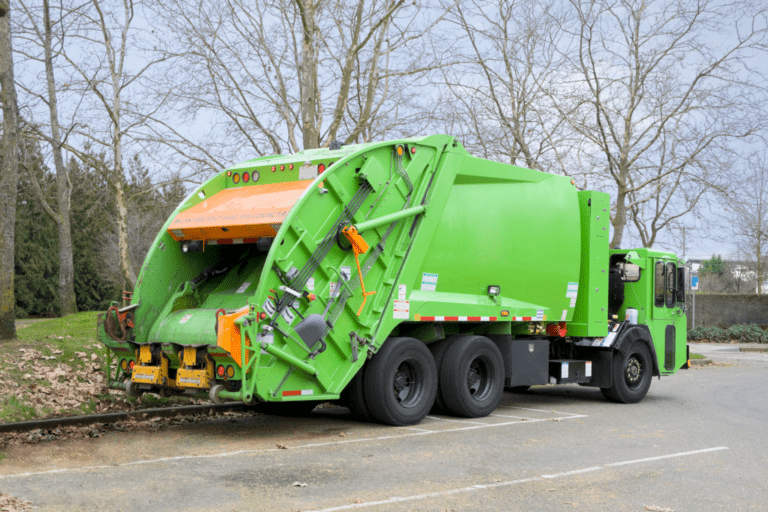Before you head out on a run, you know that you need to inspect your vehicle carefully. What you may not realize, however, is that post-trip inspections are every bit as important as your pre-trip efforts. Have you been skipping your post-trip inspection? Consider these important benefits.
Legalities and Compliance
According to 49 CFR §396.11, if your vehicle carries passengers, you must provide a post-trip inspection at the end of each day’s work. You need to provide a report for every vehicle that you operate during each business day, so if you operate several vehicles, you’ll need to provide as many reports as the vehicles you drove. While this measure can appear time-consuming, it also ensures that each vehicle is evaluated carefully at the end of the day, including important details like:
-
The functionality of all of your brakes
-
The functionality and effectiveness of headlights, tail lights, and signal lights
-
The vehicle’s working windshield wipers
-
A full inspection of emergency equipment
-
Tire condition
-
Effectiveness of the steering
-
Any potential problems with coupling devices
In short, a post-trip inspection should examine all the necessary components of the truck. As long as no problems are found with the vehicle, only the driver need sign the report. If the driver does find defects, on the other hand, a company mechanic or supervisor must also sign off on the form. When defects are found, the driver will also need to collect a signature from the next driver of the vehicle, indicating that they are aware of the problem and prepared for potential challenges on the road.
Why is the Inspection So Important?
This post-trip inspection isn’t just important for maintaining compliance and ensuring that you have covered all the important details. It also offers a number of benefits to carefully consider after each trip.
A Post-Trip Inspection Ensures That Your Mechanics Have Time to Repair Damaged Vehicles
A pre-trip inspection prevents you from rolling out with a vehicle that suffered damage that no one noticed. A post-trip inspection, on the other hand, can prevent costly delays and make it easier to move your trucks out on time.
A Post-Trip Inspection Ensures That Any Problems Are Noted and Reported
After a trip, you can’t wait to get home–or at least to get away from the truck for a while. Unfortunately, this can mean poor communication between drivers or even drivers and mechanics. Even a problem that you noted while you were on the road may go unreported, and if the next driver doesn’t notice it during the pre-drive check, he could end up out on the road with significant vehicle problems. When you conduct a post-trip inspection, on the other hand, you must make note of those potential problems and bring them to the attention of the mechanic ahead of time.
The Post-Trip Inspection Means More Eyes on the Vehicle
By conducting both pre- and post-trip inspections, you ensure that two drivers check over the vehicle before it goes out again. This means twice as many opportunities to discover potential problems, which can substantially increase the odds that those problems will be fixed before the truck goes back out on the road.
Post-Trip Inspections Can Catch Potential Violations
cSA violations are costly. Repeated violations can eventually cost you your business. A post-trip inspection, on the other hand, allows you to catch more potential hazards on each vehicle in the fleet–and that means fewer violations.
Improving the Post-Trip Inspection Process

As a fleet manager, you want to ensure that the post-trip inspection process is as smooth as possible–and that your drivers don’t miss any important details. Try some of these strategies to help ensure effective inspections.
Create an Inspection Form That Is Easy to Fill Out
If possible, create a systematic form that allows drivers to move smoothly around the vehicle, rather than a disjointed one that is hard to read or navigate.
Make Sure That All Drivers Receive Proper Training
Let drivers know exactly what is expected of them during a post-trip inspection–and, for that matter, a pre-trip inspection. Do not assume that drivers will automatically know what they need to do during this inspection; instead, take the time to carefully walk them through it during the onboarding process. Periodically, offer refresher training in this as well as any other important areas.
Watch Your Drivers
Periodically, take the time to watch drivers as they move through inspections. Make sure they know what they’re looking for, how to report it, and that they take a systematic approach to examining the truck so that they don’t miss any potential details or important problems with the truck. If you spot potential problems with an inspection, point them out.
Create Clear Processes Throughout Your Fleet
Do drivers know what to do with a vehicle that has a mechanical problem? Do drivers know how to quickly differentiate between a vehicle in the fleet with a mechanical problem and one that’s ready to go? Consider some of these elements:
-
Where are vehicles with problems parked? Is this a different area from the normal parking?
-
How are problems reported? Who is responsible for signing off on any problems with vehicles in your fleet?
-
What should drivers do if a vehicle they are expected to drive has a mechanical problem? How are they notified once those problems with the vehicle have been fixed?
-
Where is post-trip inspection paperwork filed? Is there a specific location within your business where it is turned in?
Learn More About Post-Trip Inspection
The post-trip inspection is every bit as important as the pre-trip inspection–in some cases, even more so. A post-trip driver has already been in the vehicle in question and may already have an idea of potential problems. Through that inspection, he can identify ongoing challenges and ensure that the vehicles in your fleet remain in repair and ready to go.
Do you need more help with your fleet inspections, maintenance, or paperwork? Contact us today to learn more about how we can keep your fleet moving more smoothly.









